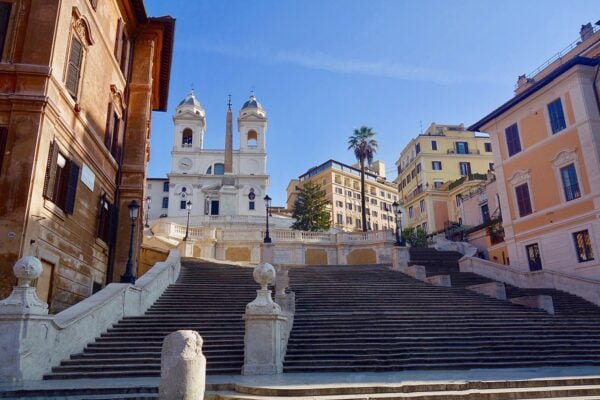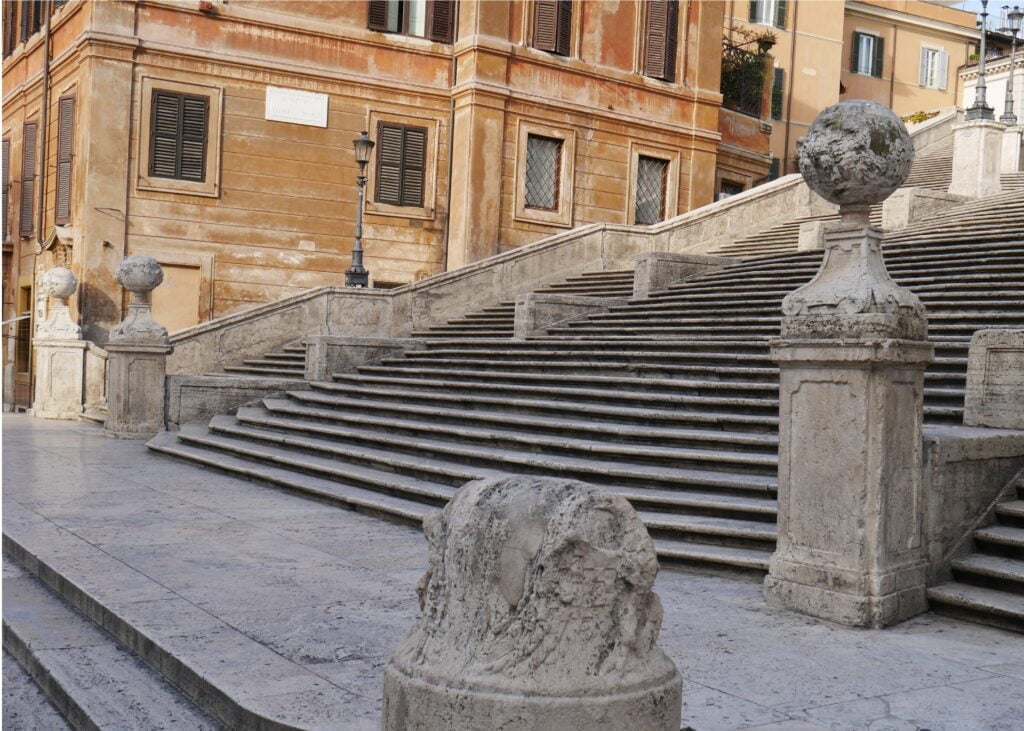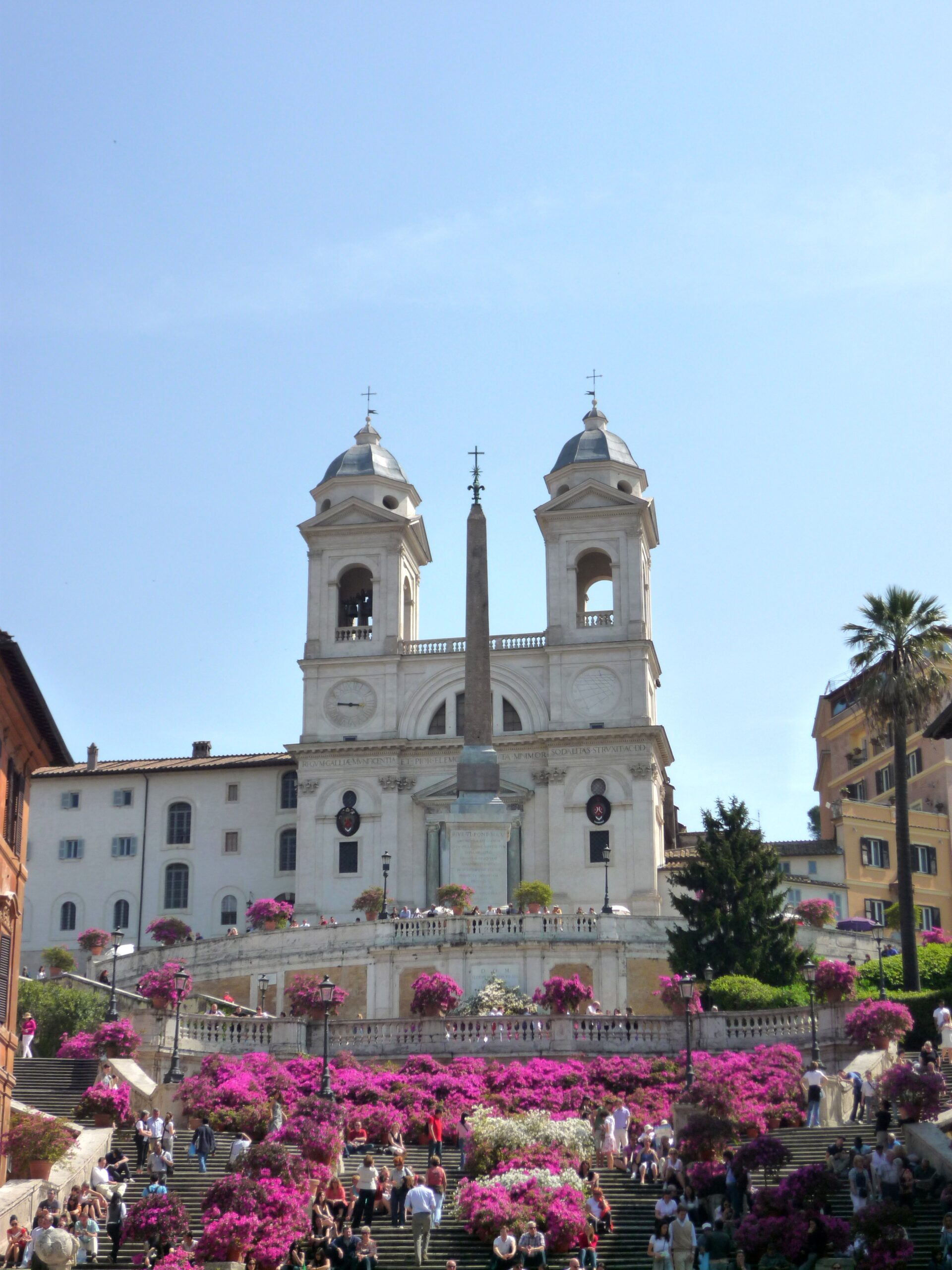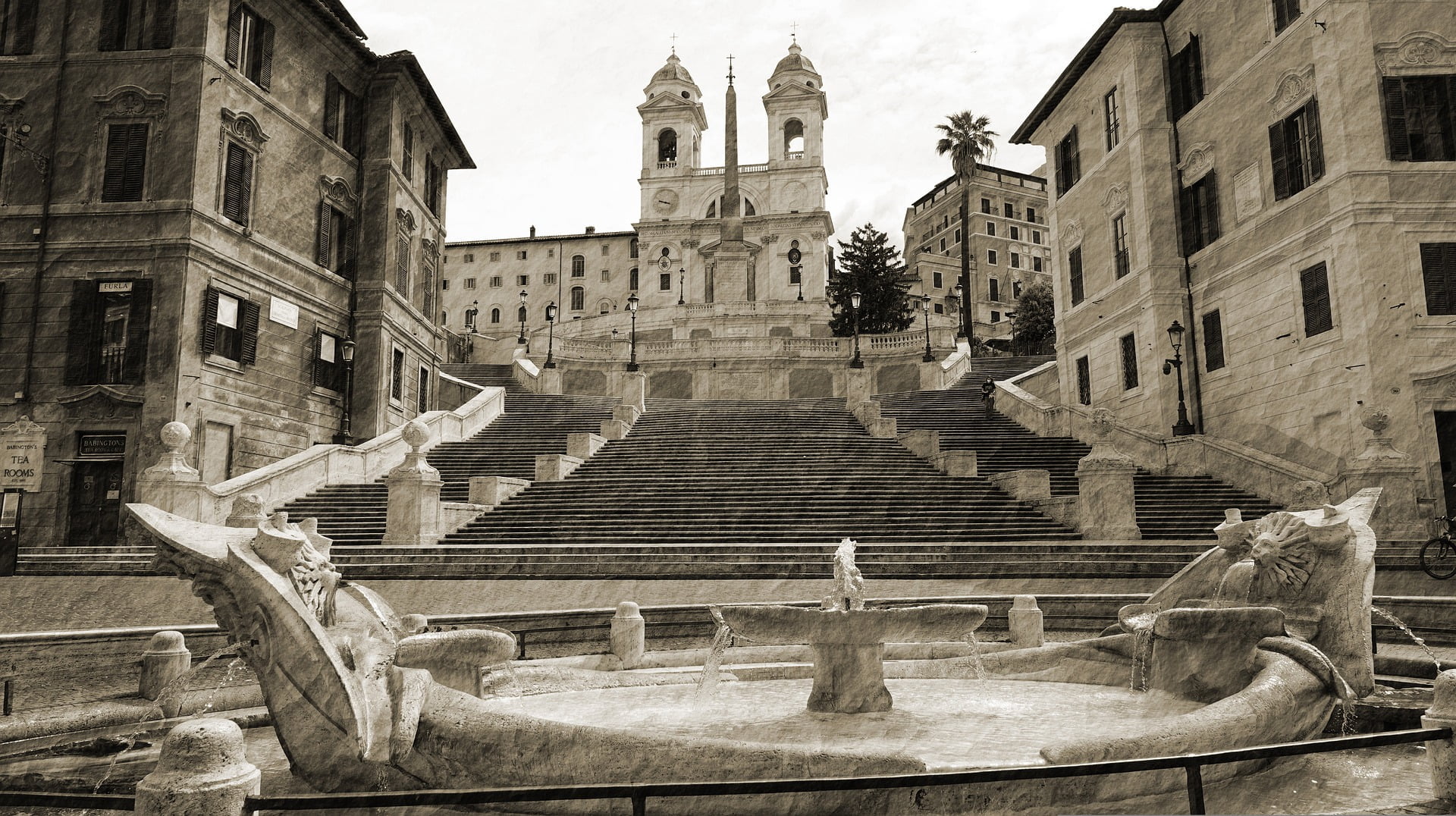Spanish Steps in Roman Travertine
A long-lived marriage, the one between the most famous staircase in the world, the Spanish steps, and roman travertine, which has lasted for almost 3 centuries. In 2025, in fact, the staircase that connects Piazza di Spagna to the church of Santissima Trinità dei Monti will turn 300 years old, as its inauguration took place during the Jubilee occurred in 1725.


Initially conceived by the famous Cardinal Mazarin and designed in 1660, the staircase construction started only 60 years later, due to Mazarin’s death. Then Cardinal Pierre Guérin de Tencin resumed the project and commissioned its design to a pair of renowned Italian architects, Alessandro Specchi and Francesco De Sanctis.
The staircase served to connect the square now known as Piazza di Spagna with the church of Trinità Dei Monti. Originally the steep slope was difficult to access and a staircase was meant to dramatically improve the usability of the area. However, it was not until Pope Benedict XIII that the Spanish steps were finally inaugurated. In fact, he really wanted to carry this out on the occasion of the Holy Year, or Jubilee, in 1725.
135 steps or Roman Travertine triumph
The staircase has 135 wide steps, for an overall height of 29 meters, and is entirely made of roman travertine. Given its elegance, its longevity, and its resistance to atmospheric phenomena, the choice could only fall on this natural stone. Moreover, as one of the main challenges was to ensure a safe staircase that avoided any sliding effect, the natural anti-slip feature of roman travertine serves its purpose perfectly.
As a staircase, it is meant to bear the weight of large flows of pedestrians, and choosing carefully the thickness is of the outmost importance. If the piece was too thin it could break, but one with the right thickness is going to last for a very long time. These steps prove it, as they have already withstood many changes of seasons and the sudden changes in weather that come with them.
Nevertheless, the choice of this naturally found stone material was also influenced by the preexisting Fontana della Barcaccia built at the foot of the staircase, in Piazza di Spagna, during the first half of 17th century. The fountain is made of travertine too and its design is attributed to the sculptor Pietro Bernini, father of the more famous Gian Lorenzo Bernini, the sculptor and architect who realized the Saint Peter’s Square Colonnade, both great admirers of roman travertine’s potential.
In addition to this, the staircase is embellished with garden terraces. Following an annual spring tradition of the city, they display around 300 azalea flowers. The pure white and bright purple colors of the flowers match perfectly with the warm colors of roman travertine steps.

In almost 3 centuries of its existence, the Spanish steps of roman travertine have been climbed by millions of citizens and tourists, photographed billions of times, used for events and fashion shows. A priceless jewel of exquisite craftsmanship in the heart of Rome.



Follow Us On Social Media: